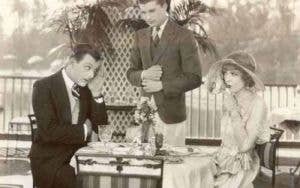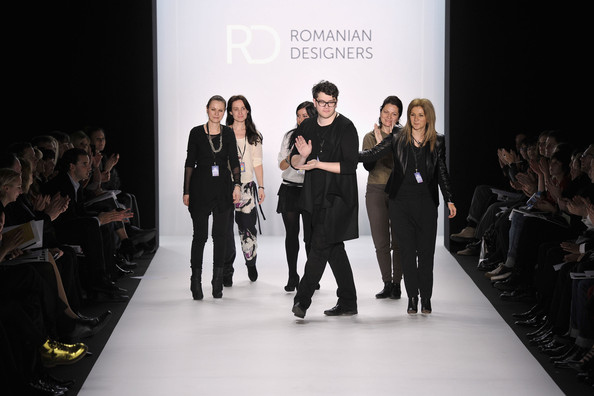Latest fashion trends from Paris, Milano and New York influenced the Romanian fashion scene between 20's and early 40's as people had the freedom to travel and find inspiration in the international fashion. The major avenue in central Bucharest, Calea Victoriei, is a strong symbol of the early existence of fashion here, lined with fine houses, palaces, churches, hotels, up market shops and museums. Due to its elegant architecture and the sophistication of its elite, Bucharest was known as the "Little Paris" during the two World Wars. However, the fashionable promenades that took place in Bucharest during the times when Romania was still a monarchy were almost nonexistent in the long and difficult communist period as the country functioned as a closed system; hence any connection with the world outside was severely punished. In Romania the democracy came into effect in 1989, a relatively late period, comparing with other countries from this part of Europe. As a result of this major change, the new market-oriented economy lead to fundamental changes in all aspects of economic life, mainly in domains such as marketing and fashion. On one hand, after the termination of the Ceausescu regime in 1989, in the Romanian fashion market was identified an increasing demand for western fashion merchandise, more specifically for famous brands, fact that led to a shopping revolution. On the other hand, in the immediate period of the fall of communism, consumers appreciated the products at their most basic level and the idea of brand and differentiation was a strange and new concept for them.

According to a study carried out by AT Kearney in 2009, Romania is seen as an attractive market for the investments of clothing merchandise, taking into consideration aspects such as market size or the popular enthusiasm to spend (FRD Center Market Entry Services Romania, 2011). Furthermore, Romanian women have had a continuous interest in fashion even before the fall of communism, for instance any international fashion magazine that secretly entered the country was highly required, as Romanian women expressed a high interest for fashion progress in the world. Interestingly, it was inevitable that Romanian women would attempt to reproduce Western fashion by using the German magazine Burda as a key inspirational element as it contained actual patterns with original Western designs.
Some examples of international retailers who successfully met the Romanian fashion market are Benetton Group (1999), Zara (2007), C&A (2009), Gap (2009), Moschino (2009) and H&M (2011).
The presence of these brands reveals the significant long-term potential of the Romanian clothing sector. Regardless of the fact that the economical crisis is affecting the Romanian luxury market, brands such as Gucci, Emporio Armani, Hugo Boss, Burberry, Valentino, Alfred Dunhill, Louis Vuitton and Max Mara are still highly desired by the Romanian wealthy customers. Moreover, the notorious luxury brand Roberto Cavalli recently inaugurated its first store in Romania at JW Marriot Hotel, Bucharest, on 18th of April 2013.

Romanian Fashion Designers
In 2013 the Romanian fashion scene presents real reasons for optimism, with promising designers such as Maria Lucia Hohan who gained great international recognition for her sheer muslin vaporous dresses worn by celebrities such as Jennifer Lopez, Kimora Lee Simmons, Sofia Vergara, Jennier Morrison and Kelly Rowland, to name a few.
Moreover, it has become a tradition for some talented Romanian designers such as Stephan Pelger, Adelina Ivan, Andra Clitan, Irina Scrotter and Lucian Broscatean to display their collection at Berlin Fashion Week every year. Cristhelen B. by Musette, a company specialized in the production of leather shoes and accessories is another Romanian brand that already gained brand awareness in Europe, North America and Asia for the refinement and quality of the products it offers. However, there is still an immense need for development and recognition of authentic Romanian brands both internally and externally. A first step taken in this direction was the inauguration of the urban space Downtown Bucharest who took place at Eva Store – Romanian Design – a pop-up store meant to host the designs of some of the most popular Romanian designers: 109, Adelina Ivan, Carla Szabo, Carmen Secareanu, Ciprian Vrabie, Irina Schrotter, Kristina Dragomir, Lady Magpie, Murmur, Patzaikin and Venera Arapu.
The world outside is always open to explore old European capitals that provide a fresh and innovative approach to fashion. As it is, subtle and minimalist or eccentric and cutting-edge, Romanian fashion can easily gain ground in the international fashion world if firstly receives internal recognition, promotion and conservation. Maybe in this manner Bucharest could regain its old nickname – the "Little Paris".

